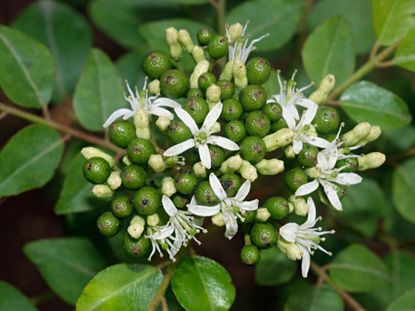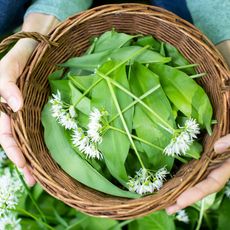Curry Leaf Care - Growing Curry Leaf Tree In Your Garden


Curry leaf plant has centuries of use in Ayurvedic medicine, as well in Indian cuisine, where it is a component of the popular seasoning called curry. Curry seasoning is a compilation of many herbs and spices, whose flavor can sometimes come from curry leaf plants.
The botanical name is Bergera koenigii, but was once classed as Murraya koenigii. It is a small tree native to India and is tolerant of tropical conditions. There are even some dwarf forms that may be grown indoors in cooler climates.
Quick Facts about Curry Leaf Plant
- Botanical name: Bergera koenigii
- Height: 15 feet (4.6 m)
- Spread: 12 feet (3.6 m)
- Sun exposure: full sun to partial shade
- Soil requirements: well drained
- Hardiness zones: 9-12
- When to plant: spring or year round
What Is a Curry Leaf Plant?
Curry leaf plants are members of the family Rutaceae, which encompasses plants such as citrus and the cork tree. The plant is known as “sweet neem” in its indigenous range and also bears numerous Indian names. The little tree or bush may grow up to 15 feet (4.6 m) high with a spread of 12 feet (3.6 m). The tree produces vertically peeling bark of greenish brown, which when removed reveals bright white wood. The leaves are compound, with delicate leaflets.
Curry leaf plant flowers are small, white, deeply scented, and funnel shaped. They appear from April to May. After bloom, roundish to elliptical berries appear, deeply black and glossy when ripe.
Fruits arrive in heavy clusters of 30-80 from July to August. The fruit is edible, but the seed is poisonous and must be removed prior to use. The seeds are very large and green, leaving little edible pulp. However, the pulp is often used in dessert preparations. They are high in Vitamin C and other nutrients.
The foliage is the real standout -- it’s arranged alternately on the stem and pinnate and is comprised of many leaflets. The pungent scent is spicy and heady, and best when the leaves are fresh.
There are three types of curry tree: regular, dwarf, and gamthi. The latter has the most aromatic leaves.
Gardening tips, videos, info and more delivered right to your inbox!
Sign up for the Gardening Know How newsletter today and receive a free download of our DIY eBook "Bring Your Garden Indoors: 13 DIY Projects For Fall And Winter".
Growing Curry Leaves
If you want to grow a curry leaf plant successfully, you need to meet some basic requirements.
When to Plant Curry Leaf
The best time to plant a curry tree is in early spring just before active growth resumes.
Cold Hardiness
Curry leaf plants are hardy to United States Department of Agriculture zones 9-12. They are perennials, but they are not cold hardy and cannot withstand sustained frost. In zones 9-12 they can be grown outdoors (with frost protection when needed). In all other zones they can be grown outdoors as annuals, or in containers that are brought indoors for the winter.
Curry Leaf Propagation
Curry leaf plants may be grown from cuttings or seed. Seeds should be scarified or have the husk removed prior to planting. Fresh seed shows the greatest rate of germination. Sow the seeds in potting soil and keep them damp but not wet. They will need a warm area of at least 68 degrees F. (20 C) to germinate.
Growing curry leaf tree from seed is not an easy task because germination is fickle. This method will also take years before the tree is large enough for harvest.
You can take a cutting of fresh curry leaves with petiole or stem to start a plant. Treat the leaves as a cutting and insert them into a soilless potting medium. Take a piece of stem from the tree that is about 3 inches (8 cm) long and has several leaves. Remove the bottom 1 inch (2.5 cm) of leaves. Immerse the bare stem into the medium and mist thoroughly. It will root in about three weeks if you keep it warm and moist. This method is the easiest and most efficient.
Sun
Curry leaf plants perform best in full sun to partial shade. During summer, potted plants should be moved to light shade to prevent the leaves from burning.
Soil
Plant the curry leaf tree in a well-drained pot with a good potting mix and place it in a sunny area. If planting outdoors, choose a spot with good drainage.
Fertilizer
During the active growth period of spring and summer, fertilize the curry leaf tree every five weeks. Suspend feeding during the cooler months.
Problems
Watch the plant for mites and scale. Use an insecticidal soap to combat the pests.
Water
Thought it needs good drainage, curry leaf requires moderately moist soil. Water consistently to keep it moist.
Pruning
In order to encourage leaf production, the berries should be picked off. If fruit is desired, leave the berries to maturity.
Using Curry Leaf Herb
Curry leaves have the strongest flavor and aroma when fresh. In spite of the name, curry leaf plant does not taste like the curry spice. It is often used in curry seasoning, however.
The leaves are often used in medicinal concoctions. Leaves, roots, and bark are made into tea to calm an upset stomach. Externally, the leaves may be ground up and made into a paste to apply to bites and skin eruptions. The leaves have natural antibacterial and anti-inflammatory properties. Curry leaves are high in iron and help build the blood and fight anemia.
In culinary uses, the leaves are used in many dishes. They flavor fish and beef stews, feature in a yogurt drink, and add depth to chutney and pickles. It is recommended to harvest leaves fresh for use, as they lose flavor when dried. The leaves may be frozen for later use.
You can also dry the leaves and crush them for use. Store them in a sealed glass jar out of light and use them within a couple of months. Since they lose flavor quickly, growing curry leaf trees is the best way to have a good, constant supply of this flavorful herb.

Bonnie Grant is a professional landscaper with a Certification in Urban Gardening. She has been gardening and writing for 15 years. A former professional chef, she has a passion for edible landscaping.
-
 Elegant Exotics: 8 Beautiful Amaryllis Varieties That Will Brighten Any Holiday Display
Elegant Exotics: 8 Beautiful Amaryllis Varieties That Will Brighten Any Holiday DisplayWhether red, pink, white or variegated, the right amaryllis varieties can enhance any living space, especially during the holidays. We round up eight of the most exquisite
By Bonnie L. Grant
-
 Forage For Herbs: 7 Tasty And Safe Wild Herbs To Pick Close To Your Own Backyard
Forage For Herbs: 7 Tasty And Safe Wild Herbs To Pick Close To Your Own BackyardIn addition to growing your own herbal staples, did you know there are several wild options out there that are safe and tasty – and free? Try foraging these 7 wild herbs
By Amy Grant